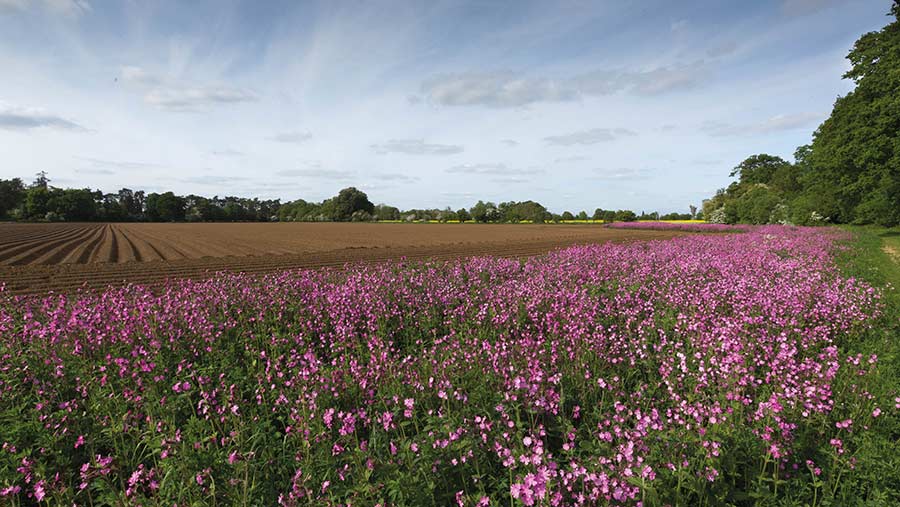Opinion: Nature recovery is not a threat to food production
 © Tim Scrivener
© Tim Scrivener As ever, the Oxford Farming Conference grabbed the New Year farming headlines. Defra secretary George Eustice announced the next steps for Environmental Land Management (ELM), which has resulted in headlines of “300,000ha to be taken out of food production” and “rewilded” – not that he used these words at all.
We need to see past the alarmist press headlines and not conflate or confuse too many statistics.
See also: Landscape and Local Nature Recovery – what farmers need to know
About the author

Geoff Sansome is head of agriculture at Natural England. He is also a Nuffield Farming Scholar, Oxford Farming Conference Council member and farms with his family in Worcestershire.
Their farm has participated in agri-environment schemes since 2005. Here he shares his personal opinion on recent government policy announcements. Twitter @HawfordFarm
The 300,000ha is for habitat restoration, much of which supports food production on our 9.2m hectares of English farmland.
Our farming systems work with and share some of our most precious habitats, from calcareous grassland through to arable field margins.
And it won’t be all on productive farmland; for example, there is more than 500,000ha of wetland habitat in England and at least 100,000ha of that needs restoring.
This 300,000ha of restored habitats will be delivered through the Landscape Recovery (LR) and Local Nature Recovery (LNR) components of ELM.
They are not all about “rewilding”, despite the headlines. LR could potentially affect some land for food production, but any negative impact will be considered as part of the project selection process.
Anyone who reverts to the worst farming mantra ever – “you can’t go green when you are in the red” – has got the wrong end of the stick
A significant amount of this habitat land will be under LNR, the next evolution of Countryside Stewardship (CS).
Like the 40,000 farmers in England who already deliver stewardship on 2.9m hectares of farmland, that will sit easily alongside and support food production. It won’t be lost from farming.
We need to restore and protect habitats, improve air and water quality, enhance biodiversity and protect our genetic resources to ensure we have what we need for farming, food production and profitable farms. That’s before we consider the climate crisis.
Anyone who reverts to the worst farming mantra ever – “you can’t go green when you are in the red” – has got the wrong end of the stick.
The reality is that we can’t farm profitably in future unless we look after our basic environmental resources.
Will it affect food security? The 2021 report on food security illustrates that for many major commodities we are already at, or close to, self-sufficiency in this country.
Consumer choice, seasonality and our climate bring the statistics down (and we can’t stop people eating avocados and rice…).
Even if the full 300,000ha (equivalent to just 3% of farmland) was lost from food production, are we saying that we as an industry could not close that productivity gap, or benefit greatly from the improved environmental resources that would be delivered?
And let’s get 300,000ha in perspective. Already 100,000ha of food producing land is “lost” to bioenergy/fuel crops. Where’s the outcry about that?
That’s not to say such crops aren’t valuable, but let’s get a coherent argument; farming is not all about food production.
At the height of the awful set-aside policy of the 1990s, about 500,000ha of some of the best farmland was taken out of production.
We didn’t starve. It delivered little wildlife benefit, and the benefits from a fraction of that land managed under CS or LNR alongside food production will be much greater.
If we don’t embrace these changes, we risk losing public support, public money and a chance to further enhance the reputation, quality and branding of English food.
It’s time for a less alarmist message, to forget the “either/or” approach to farming and the environment, find the middle ground and grab the opportunities being offered.
